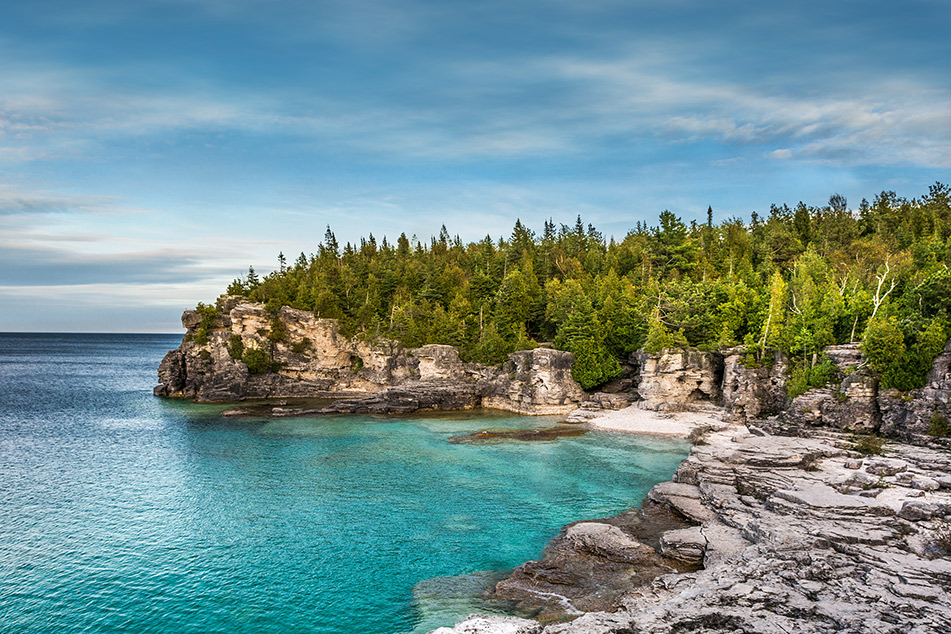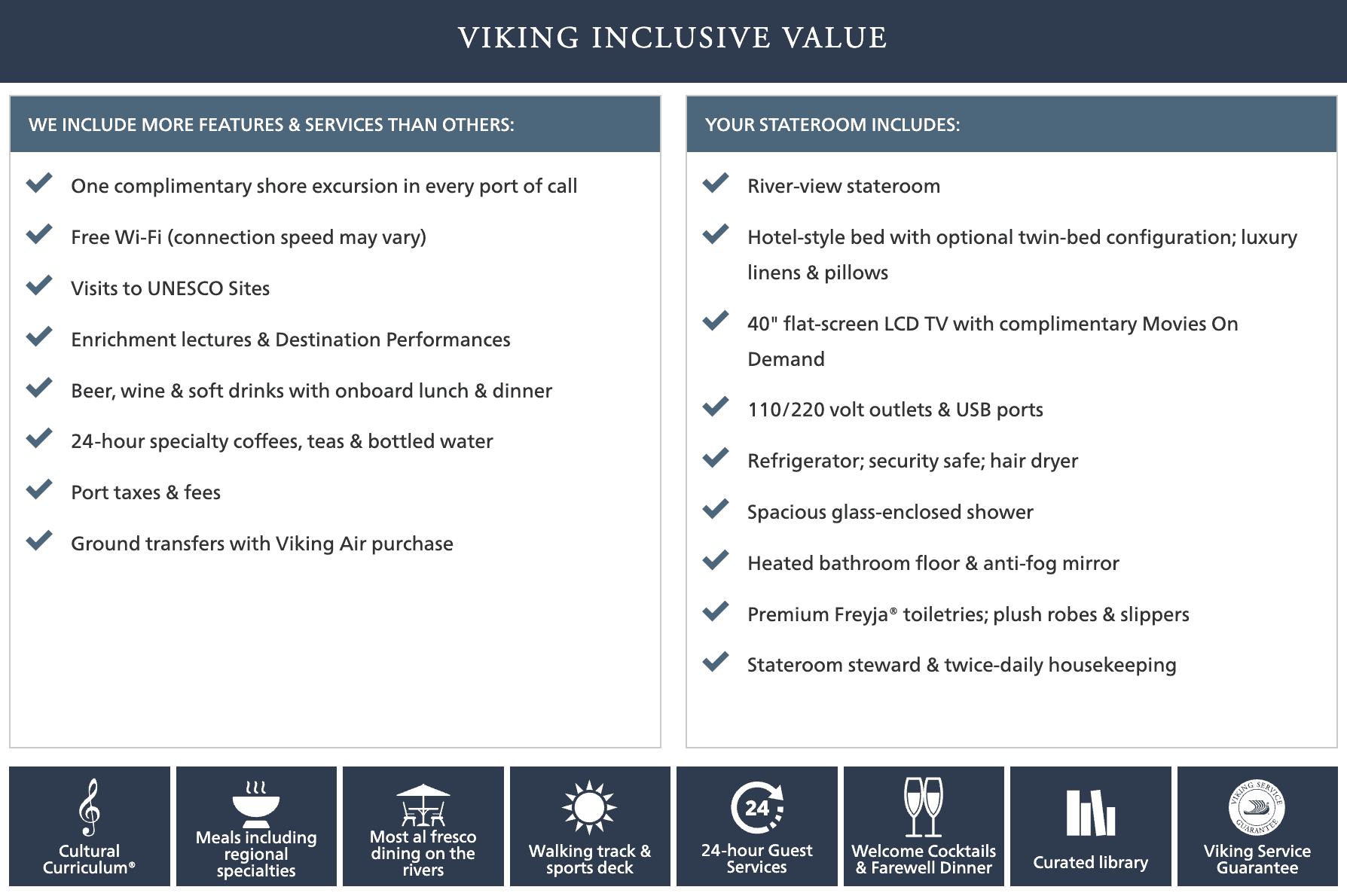Call us or email us if you have any questions.

Legendary waters & scenic landscapes
Join Viking for a unique expedition across the historic waterways of all five of the majestic Great Lakes. Experience culture-rich urban centers and admire the awesome power of thundering Niagara Falls. Explore the granite islands and sheltered inlets of Georgian Bay and traverse the famous Soo Locks. Study the aquatic ecosystems of the lakes and venture into the dense boreal forests that line the shores of Lake Superior and Lake Michigan.

Toronto, Ontario, Canada / Duluth, Minnesota, United States
2023 Sailings on September
2024 Sailings from May to September
2025 Sailings from May to August
* Please check with us for dates & pricing
Cruise fare from $15,595.0 per person
* Please check with us for dates & pricing

Embark your ship and settle into your stateroom. Toronto is beloved by many as one of Canada’s boldest and most innovative capitals. Hugging the shores of Lake Ontario and facing the picturesque Toronto Islands, it was founded by British loyalists fleeing the American Revolution in 1793. Today the city is a pleasure to explore on foot, whether strolling past the Victorian bay-and-gable homes of Rosedale, or the historic enclave of Wychwood Park, an Ontario Heritage Conservation district. The city’s Distillery District is home to North America’s largest preserved collection of Victorian industrial architecture.
The Welland Canal is one of Canada’s greatest engineering feats of the 19th century. Built from 1824 to 1833 to bypass the Niagara River and its mighty falls, the Welland comprises eight locks that lift or lower ships a total of 326 feet between Lake Ontario and Lake Erie. This vital canal is the spine of the peninsula’s trade and industry, with numerous docks receiving ships and roadways crossing the water. Viking’s latest expedition vessels are purpose-built to traverse this impressive waterway, allowing ships to dock safely while navigating this important crossing.
Port Colborne proudly proclaims itself the “Gateway to Navigation.” It is also the gateway to North America’s largest and most powerful cascade, Niagara Falls. Epic in its scope and volume, the falls hurl 42 million gallons of water down 20 stories every minute. Its mile-wide length straddles the Canadian and US borders and is split by islands into three smaller cataracts: Horseshoe Falls, Bridal Veil Falls and American Falls. Long a storied destination for young honeymooners, today the mighty torrent is a thrill for visitors.
Cleveland sits on the shores of Lake Erie at the mouth of the Cuyahoga River and is a major port along the St. Lawrence Seaway. This industrial city is also a gateway to the Cuyahoga Valley and its namesake national park, a region of reclaimed nature covering 51 square miles of landscape between Cleveland and Akron. A mix of forests, wetlands and canals, as well as the majestic cascade of Brandywine Falls, the park has more than 125 miles of hiking trails that crisscross the land, including one that runs along the former route of the Ohio and Erie Canal Towpath Trail.
Detroit sits on one of the four straits that link the Great Lakes to the St. Lawrence Seaway and has emerged as a city rich in culture. In 2015, it became the first US city to earn designation as a “City of Design” by UNESCO for its creativity in urban development. Detroit was founded as a fort in 1701 and later grew into the epicenter of the US automobile industry. Today the city is beloved as the birthplace of Motown, a portmanteau of “motor” and “town.” Its waterfront reveals remarkable examples of postmodern and art deco skyscrapers.
Alpena is the second-largest city in the northern region of Michigan’s Lower Peninsula. The town faces Lake Huron’s Thunder Bay and is home to Alpena Light, a brilliant red steel structure built in 1914. After its founding in 1840, fishing and logging were introduced to bolster its economy; today it is home to one of the largest limestone quarries in the world. Two of its architectural gems are listed on the National Register of Historic Places: the art deco County Courthouse and the late-Victorian IOOF Centennial Building, once the city’s courthouse.
Algoma is the gateway to the scenic Door Peninsula, a slender limestone peninsula projecting out into Lake Michigan. It was first explored by French missionaries and fur traders during the 17th century, who named it Port des Mort, or “Death’s Door,” because of the treacherous waters separating the peninsula from nearby Washington Island. The peninsula is also the westernmost edge of the Niagara Escarpment, a prehistoric ridge that stretches more than 650 miles across the Great Lakes region, and is home to boreal forests, rugged rock formations and sandy beaches.
Steeped in the charms of simpler times, Mackinac Island is a gem of the Great Lakes. Located in the Straits of Mackinac where Michigan’s upper and lower peninsulas are closest and Lakes Huron and Michigan meet, this bucolic haven preserves gilded Victorian-era treasures along car-free streets traversed by horse-drawn carriages. The perimeter road is the only state highway in the US that does not permit motor vehicles. More than 80% of Mackinac is protected as a state park, from its Greek Revival Grand Hotel and British-built Fort Mackinac to its preserved wilderness areas.
Parry Sound boasts the world’s deepest natural freshwater port. The town was established at the mouth of the Seguin River in 1857 near the Ojibwe village known as Wasauksing, or “shining shore.” The arrival of the railroad during the late-19th century gave Parry Sound new importance as a stop on the transcontinental Canadian Pacific line. For art lovers, nearby Algonquin Provincial Park is best known for its majestic wilderness, captured on canvas by the Group of Seven, a cadre of early 20th-century Canadian landscape painters inspired by their country’s natural world.
Killarney was founded by a French-Canadian fur trader in 1820; he named the post Shebahonaning, or “canoe passage.” Its location on the northern shore of Georgian Bay made it ideal for trading. Nearby, the stunning cliffs of the La Cloche range rise dramatically above the shores of Lake Huron. These remarkable mountains are the pinnacle of Killarney Provincial Park, a vast wilderness of lakes and Eastern mixed forest. This breathtaking expanse of protected land is laced with hiking trails and—true to Killarney’s original name—canoe routes that link the area’s lake system.
Frazer Bay is located off a remote finger of land on the eastern tip of the North Channel in Ontario’s Georgian Bay, a UNESCO Biosphere Reserve. Its eponymous hill reaches almost 600 feet, offering sweeping views of the surrounding landscape. The bay lies near Killarney Provincial Park, a vast wilderness of lakes and Eastern mixed forest framed by glacier-sculpted pink granite cliffs. Across the channel lies scenic Manitoulin Island, the world’s largest freshwater lake island and itself home to another 108 freshwater lakes—some with islands of their own.
The Soo Locks is a series of parallel locks that make river travel between Lake Superior and Lake Huron possible, thereby linking Superior to the lower Great Lakes and the Atlantic. Opened in 1855 to allow ships to bypass the river’s 21-foot fall over roiling rapids, this innovative lock system—along with the Erie Canal built 30 years prior—was one of the great engineering projects of its day. Today, it guides ships past the twin cities of Sault Ste. Marie in Ontario and Sault Ste. Marie in Michigan; its bridge crosses over the Soo Locks, connecting the two cities.
Silver Islet sits on the southern edge of the Sibley Peninsula at the mouth of Thunder Bay. Nearby Sleeping Giant Provincial Park attracts outdoor enthusiasts year-round with its diverse wildlife and many miles of hiking trails that lead to spectacular views of the Canadian Shield landscape. Less than a mile from its shores are the remnants of an abandoned silver mine. Located 1,200 feet below Lake Superior, this unique underwater mine was the world’s largest and most valuable silver mine, producing the modern-day equivalent of $78 million before flooding in 1884.
Thunder Bay is known as “Canada’s Gateway to the West” for its location at the final navigational point on the Canadian side of Lake Superior. Originally founded as a fur trading post, a settlement was established in 1803 and Fort William was erected. In 1970, Fort William and neighboring Port Arthur were merged to form the City of Thunder Bay. Today, it is one of Ontario’s most vibrant cities and a center of art and culture. Its Waterfront District is beloved for its views across the bay of the Sleeping Giant, a long line of mesas that resemble a giant lying on its back.
Duluth was named for French explorer Daniel Greysolon, Sieur du Lhut, who explored the St. Louis River in 1679. In 1808, famed merchant John Jacob Astor established the American Fur Company. Copper and iron ore mining swelled the population in the 1850s, while construction of channels and locks to the east allowed larger ships to access the city. Today, Duluth celebrates its history and culture with a wide array of museums and landmarks, including its famed Aerial Lift Bridge spanning the Duluth ship canal. After breakfast, disembark your ship and journey home.
* One shore excursion included per port; all others available at an extra charge.